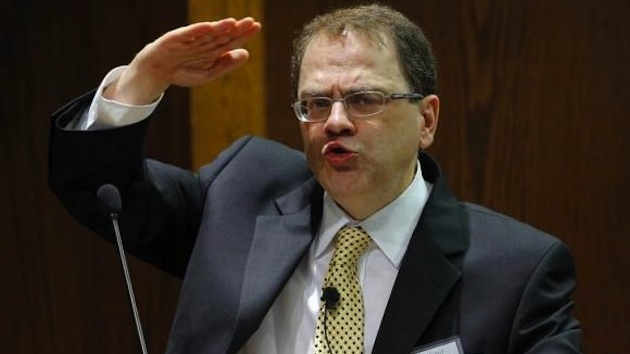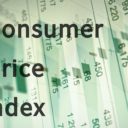

Narayana Kocherlakota, President of the Federal Reserve Bank of Minneapolis, speaks at the ninth annual Carroll School of Management Finance Conference at Boston College in Chestnut Hill, Massachusetts June 5, 2014. (Photo: : REUTERS/BRIAN SNYDER)
Narayana Kocherlakota, the president and chief executive officer of the Federal Reserve Bank of Minneapolis, said Friday that the Fed is creating “unacceptable” downside risks to U.S. inflation by signaling it will gradually end it bond-buying, money-printing monetary stimulus policy next year, despite allegedly low inflation.
Kocherlakota said in a statement, which is now posted on the regional Fed bank’s website, that the U.S. central bank should have pledged to keep rates near zero until the inflation outlook improves. He added that the central bank should also have signaled its willingness to restart its controversial bond-buying program if that pledge does not work to bring inflation expectations back to the Fed’s 2-percent target.
Following its two-day policy meeting, the Federal Open Market Committee (FOMC) renewed its vow to hold rates low “for a considerable time,” despite speculation by many economists that the phrase would be taken out. The Fed decided to end its bond-buying program known as quantitative easing in October, and most analysts have interpreted the “considerable period” to end in mid-2015. Fed policy-makers have sent signals to the markets that the phrase could be replaced with an even more vague single-term — “patience.”
Still, the U.S. central bank said it would be “patient” as it decides the time to raise borrowing costs, but Fed Chair Janet Yellen left the door open to a rate hike as soon as April. Yellen said she expects a recent decline in market-based inflation expectations to be temporary, and suggested that the Fed could raise rates next year even if inflation remains below the Fed’s 2-percent target.
Kocherlakota dissented from the decision during what was his last vote on the FOMC before he steps down from his post in early 2016. Kocherlakota began his term in 2009 as a one of the Fed’s most ardent inflation-fighting hawks, but now he is one of its most vocal policy doves.
On Friday he said the Fed was putting the United States at risk of a growth-sapping drop in inflation. The Labor Department said Wednesday that U.S. consumer prices saw their biggest drop in nearly six years in the month of November, fueled by falling gasoline prices. The Consumer Price Index (CPI) fell 0.3 percent, which is the largest decline since December 2008 after a flat reading in October.
However, the Federal Reserve has set a target of 2 percent for inflation, and it tracks an index that is currently measuring even lower than the CPI.
“In my assessment, the [Fed’s] failure to respond to weak inflation runs the risk of creating a harmful downward slide in inflation and longer-term inflation expectations of the kind that we have seen in Japan and Europe,” Kocherlakota said. “I see this risk to the credibility of the inflation target as unacceptable, given how hard it would be for the (Fed) to respond successfully if this eventuality did indeed materialize.”
Kocherlakota said a decline in market-based inflation expectations has kept the Fed from asserting the stability of long-run inflation expectations, a bedrock of sound central banking, for three straight meetings.
“Earlier this week, I informed the board of directors of the Federal Reserve Bank of Minneapolis that I do not intend to seek reappointment to a new term as president of the Bank after my current term ends on February 29, 2016,” Kocherlakota said in a statement on Dec. 12, 2014.
“I became president of the Minneapolis Bank in October 2009 so that I could be of service to my country in an economic emergency,” he added. “I have been honored to play a role in shaping the response to that dire situation. While challenges lie ahead for the Federal Reserve System, the state of crisis has passed, and I have decided not to continue my service into a new term.”
The chairman of the Minneapolis Fed’s board of directors, expressed his appreciation for Kocherlakota’s service.
“The board of directors thanks Narayana for his outstanding leadership and for his many contributions to the Bank and to the Federal Reserve System,” Chairman Randy Hogan said in a statement after the announcement. “Among those contributions, his focus on improving communication between the Bank and its constituents is a key legacy of his tenure and will serve as a guide for years to come. We look forward to working with him throughout the remainder of his term, and we wish him all the best in his future endeavors.”





my2centz / December 20, 2014
If all the leading indicators were up and the employment pate was below 6% I would agree that the economy was ripe for overheating. As it is retail, industrial manufacturing, and construction are still under-performing. The average consumer has little extra money to spend and is not out on a shopping spree. Basing inflation risk on numbers generated by the temporary fall of oil prices would be foolish and short sighted. We are in a weak recovery and instead need to take care not to snuff out economic growth by relying on such a simplistic metric of healthy economic growth. Instead of driving inflation by interest rates we should be driving them by economic growth. Then they can raise rates.
/